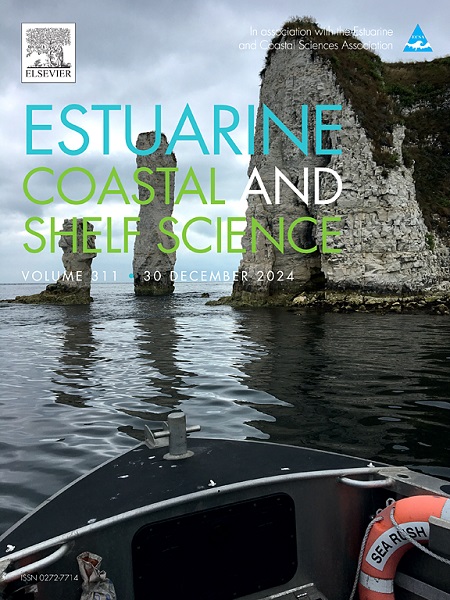菲律宾蛤对全球变化的细胞反应:评估温度上升和电子废物的风险
IF 2.6
3区 地球科学
Q1 MARINE & FRESHWATER BIOLOGY
引用次数: 0
摘要
近几十年来,由于电子设备生产的迅速增加和废弃产品的后续处置,电子废物(E-waste)已成为一个重大的环境挑战。电子垃圾中含有有害物质,包括铬(Cr)等金属和铽(Tb)等稀土元素(ree),它们会渗入水生生态系统,造成严重的生态破坏。由于气候变化,预计全球气温将上升,这些污染物与气温上升之间的相互作用可能会增加水生生物面临的风险。本研究探讨了Cr和Tb对马尼拉蛤(Ruditapes philippinarum)生化和生理反应的联合影响,马尼拉蛤通常被用作环境胁迫的生物指示物。蛤蜊在两种温度(18和21℃)下暴露于Cr、Tb及其混合物28天,以评估变暖如何影响金属毒性。采用主坐标排序法(PCO)评价了蛤蜊的总体生化反应。结果表明,与18℃相比,21℃的生化效应明显加剧,特别是抗氧化酶和生物转化酶的抑制作用明显增强。这表明氧化应激损害了蛤的酶活性,特别是在同时暴露于两种金属的情况下。这些发现强调了在变暖的世界中金属毒性的风险增加,强调了解决电子废物和气候变化的综合管理战略的必要性。通过对污染物和温度的综合影响提供关键的见解,本研究旨在为更有效的监管政策提供信息,以保护水生生态系统。本文章由计算机程序翻译,如有差异,请以英文原文为准。
Cellular Responses of Ruditapes philippinarum Clams to Global Changes: Assessing the Risks of Rising Temperatures and E-Waste
Electronic waste (E-waste) has become a significant environmental challenge in recent decades due to the rapid increase in electronic device production and the subsequent disposal of obsolete products. E-waste contains hazardous materials, including metals like chromium (Cr) and rare earth elements (REEs) such as terbium (Tb), which can leach into aquatic ecosystems and cause severe ecological damage. With global temperatures projected to rise due to climate change, the interaction between these contaminants and increasing temperatures could heighten risks to aquatic life. This study examines the combined effects of Cr and Tb on the biochemical and physiological responses of the Manila clam (Ruditapes philippinarum), a species commonly used as a bioindicator of environmental stress. Clams were exposed to Cr, Tb, and their mixture at two temperatures (18 and 21 ºC) over 28 days to assess how warming influences metal toxicity. The overall biochemical response of the clams was evaluated using Principal Coordinate Ordination (PCO). The results showed that at 21 ºC, the biochemical effects were significantly exacerbated, particularly with the inhibition of antioxidant and biotransformation enzymes compared to those exposed at 18 ºC. This suggests that oxidative stress impaired the enzymatic activity of the clams, especially under simultaneous exposure to both metals. These findings highlight the increased risk of metal toxicity in a warming world, emphasizing the need for integrated management strategies that address both e-waste and climate change. By providing critical insights into the combined effects of contaminants and temperature, this research aims to inform more effective regulatory policies to protect aquatic ecosystems.
求助全文
通过发布文献求助,成功后即可免费获取论文全文。
去求助
来源期刊
CiteScore
5.60
自引率
7.10%
发文量
374
审稿时长
9 months
期刊介绍:
Estuarine, Coastal and Shelf Science is an international multidisciplinary journal devoted to the analysis of saline water phenomena ranging from the outer edge of the continental shelf to the upper limits of the tidal zone. The journal provides a unique forum, unifying the multidisciplinary approaches to the study of the oceanography of estuaries, coastal zones, and continental shelf seas. It features original research papers, review papers and short communications treating such disciplines as zoology, botany, geology, sedimentology, physical oceanography.

 求助内容:
求助内容: 应助结果提醒方式:
应助结果提醒方式:


